The Not so Common Seal
The UK is home to some 50,000 common seals, about half of the European population. Most can be found in Scotland, but it seems that any increasing number are moving down along the east coast of England to set up what appears to be new colonies. So despite their name, there are in fact more grey seals than the misnamed common.

Seals are a common sight along the Norfolk coast and It’s is home to a number of large colonies of both grey (Grey Seals At Horsey) and common seals. Some years ago I came across a single common seal resting in one of the many small rivers outlets that flow across the beach. Thinking it was a one off visit by a lone or injured seal I was surprised to find it still swimming around the small creek months later.
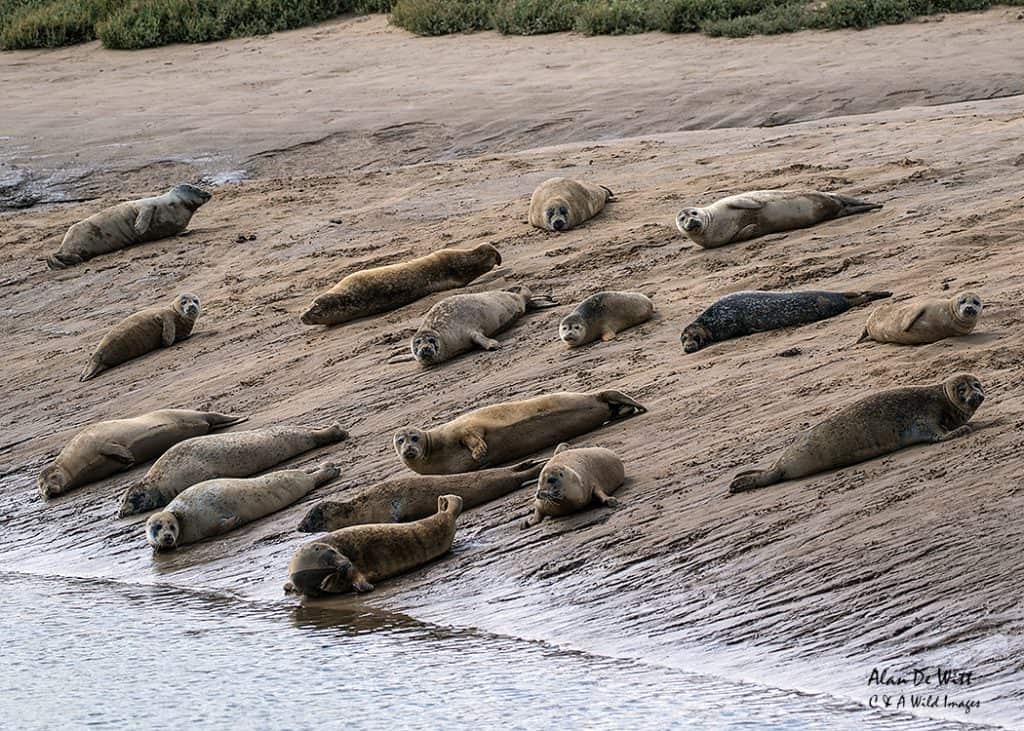
By the summer of 2008 it had been joined by at least one other seal. At low tide in the area it is always possible to see adult seals resting up on the strand line along this stretch of the beach but they seemed to stay clear of the creek.
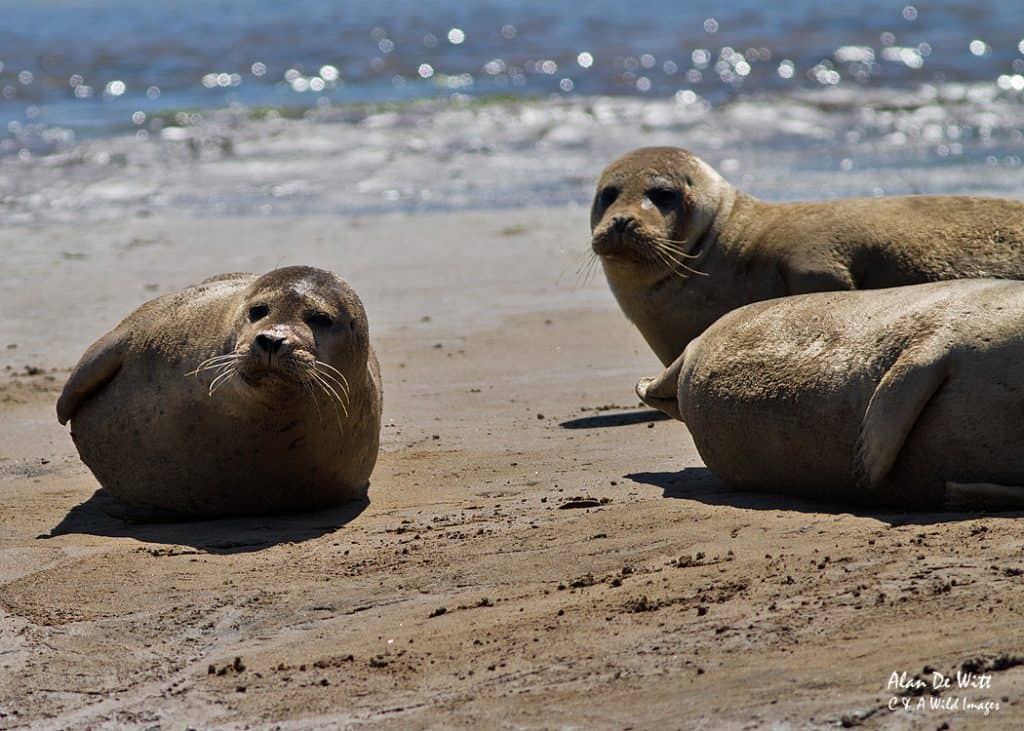
In August the following year the numbers had increased and as well as adults two pups could been seen suckling in the shallows. They also seemed to be very comfortable with the humans visiting the area. In fact it wasn’t uncommon to find the seals now paying more interest in the visitors. They were curious and would come very close before getting back to playing.
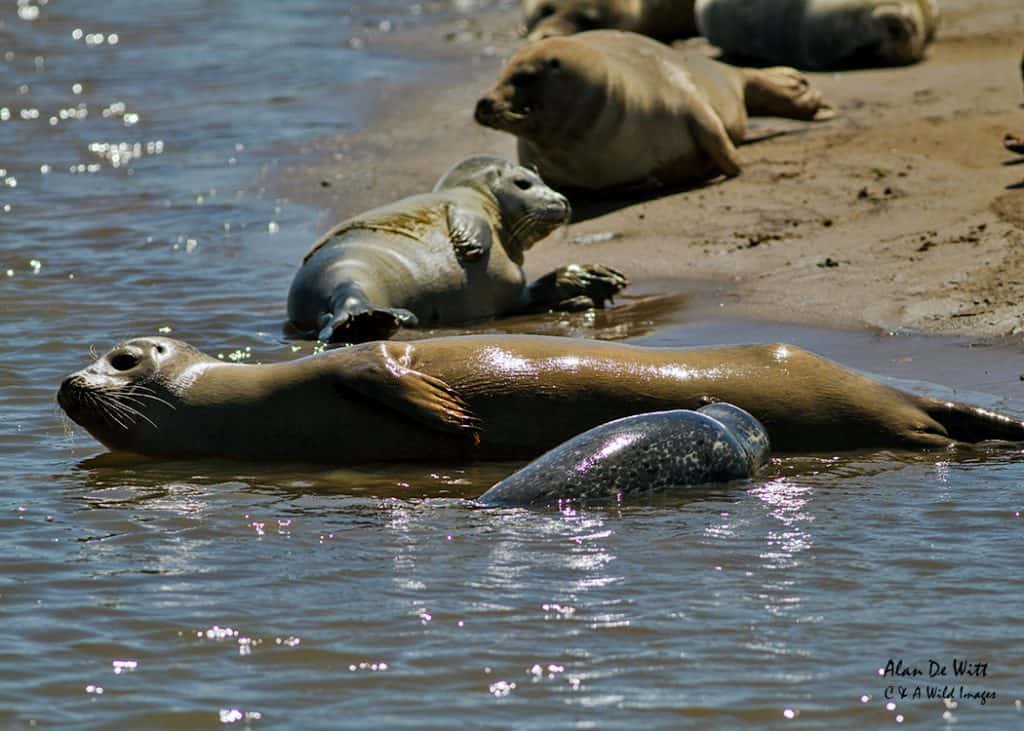
Also if you caught the tide right they seemed to be fishing in the outlet as the waters from the staithe rushed out. Even in the winter of that year the group could be found at low tide basking on the mud banks and moving further up the creek with high tide. Obviously word about the seals had spread and was attracting a constant flow of visitors. Access being easier from the other side of the outlet from a nearby beach and car park.

The Colony In July 2017
The numbers in the colony this year seemed to have stabilized at about 16 – 20. Last week on a low tide about 18 were present, some showing signs off going through their moulting process after breeding. As well as adults the colony included a number of pups, with most of those present basking on the bank. Except for the three very active seals that were entertaining the large crowd of holiday visitors that had gathered on the beach. Hopefully the increasing human presence wont disturb the colony to the point that they move. As it provides a great place to capture some images and watch the antics of these wonderful creatures.
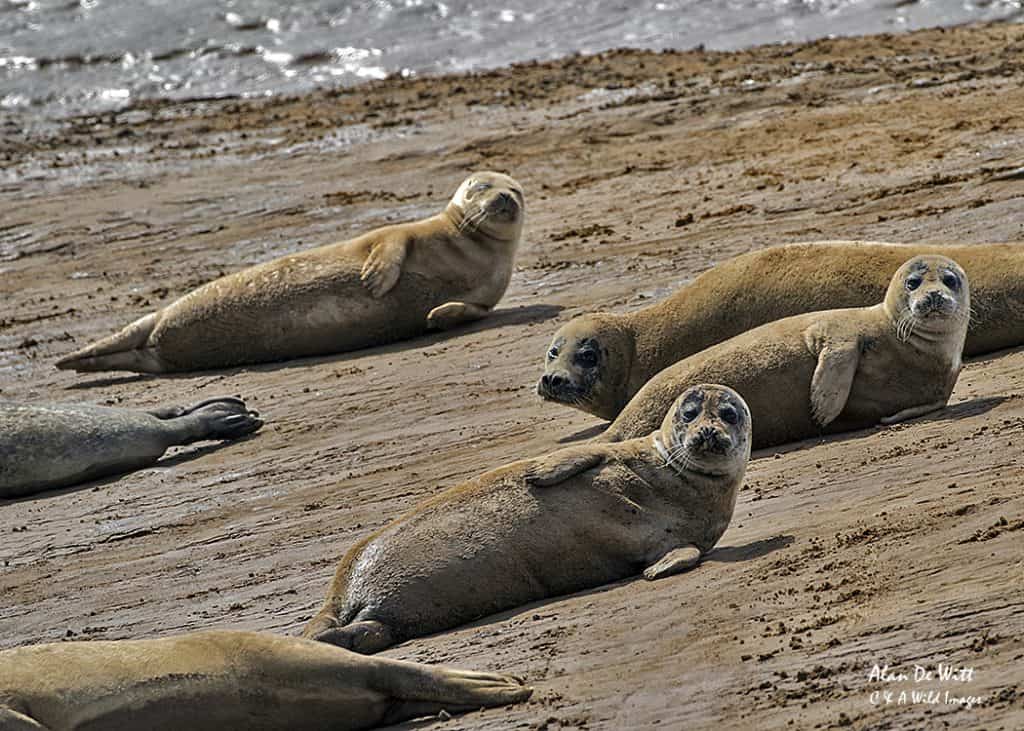
Alan De Witt
After spending a career that demanded much of my time and energy. I'm now retired and finally found some time to pursue an interest in wildlife and photography as well as putting together a website C & A's Wild Images.
I now live in Norfolk, an ideal location in the UK to see wildlife and over the years have also had the opportunity to visit and spend time using the camera in interesting and sometimes remote parts of the world. I first became interested in trying to capture wildlife images when I left university in the days of slide film. Initially I used two compact cameras with 20+ zooms but now have moved to a professional Canon SLR set-up.
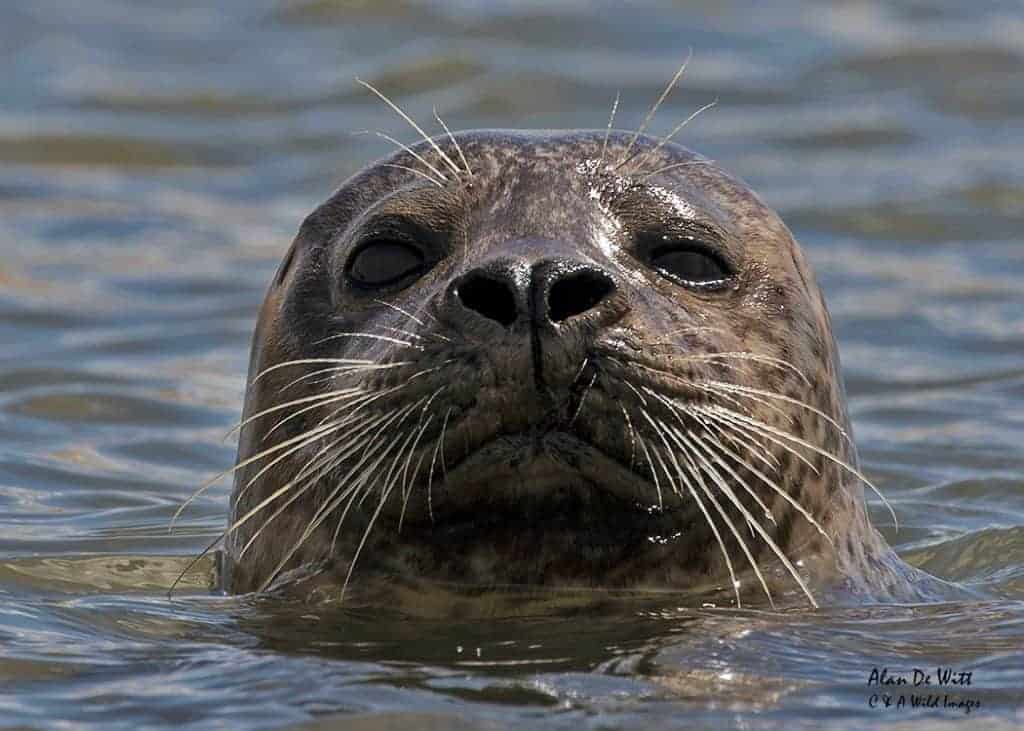
Leave a Reply